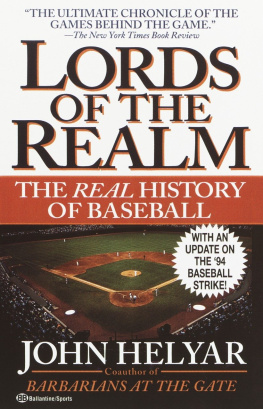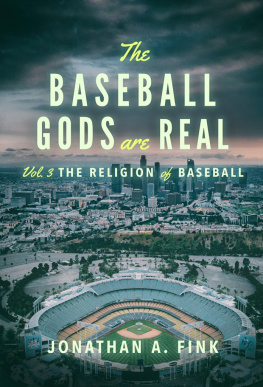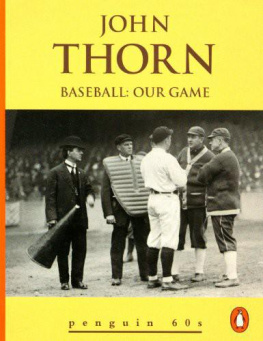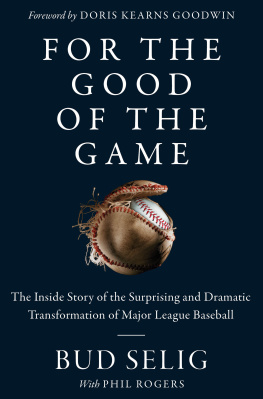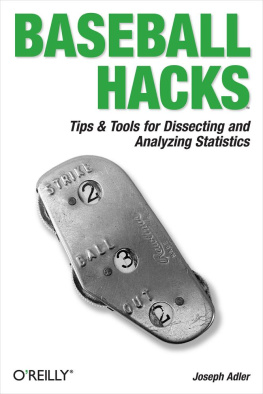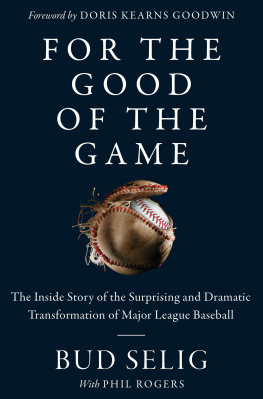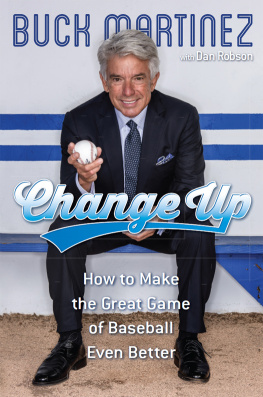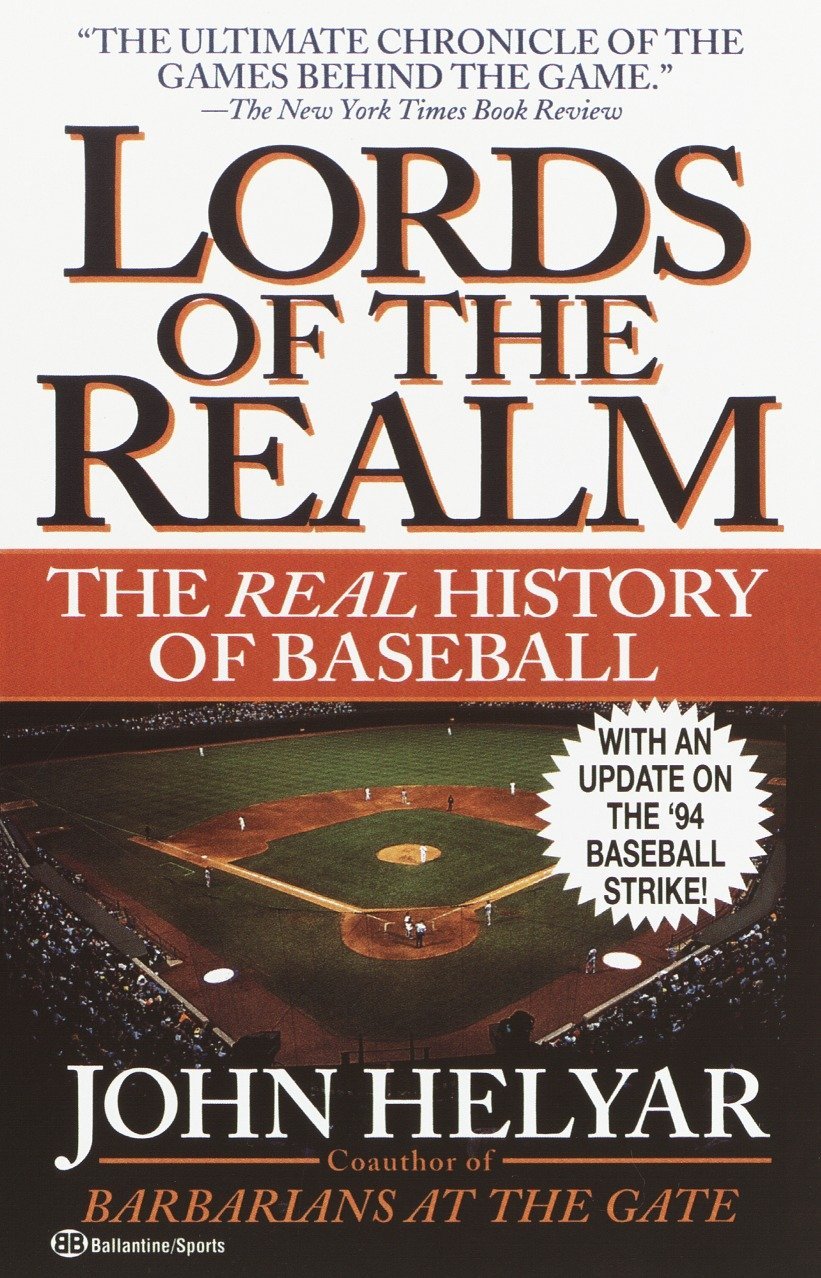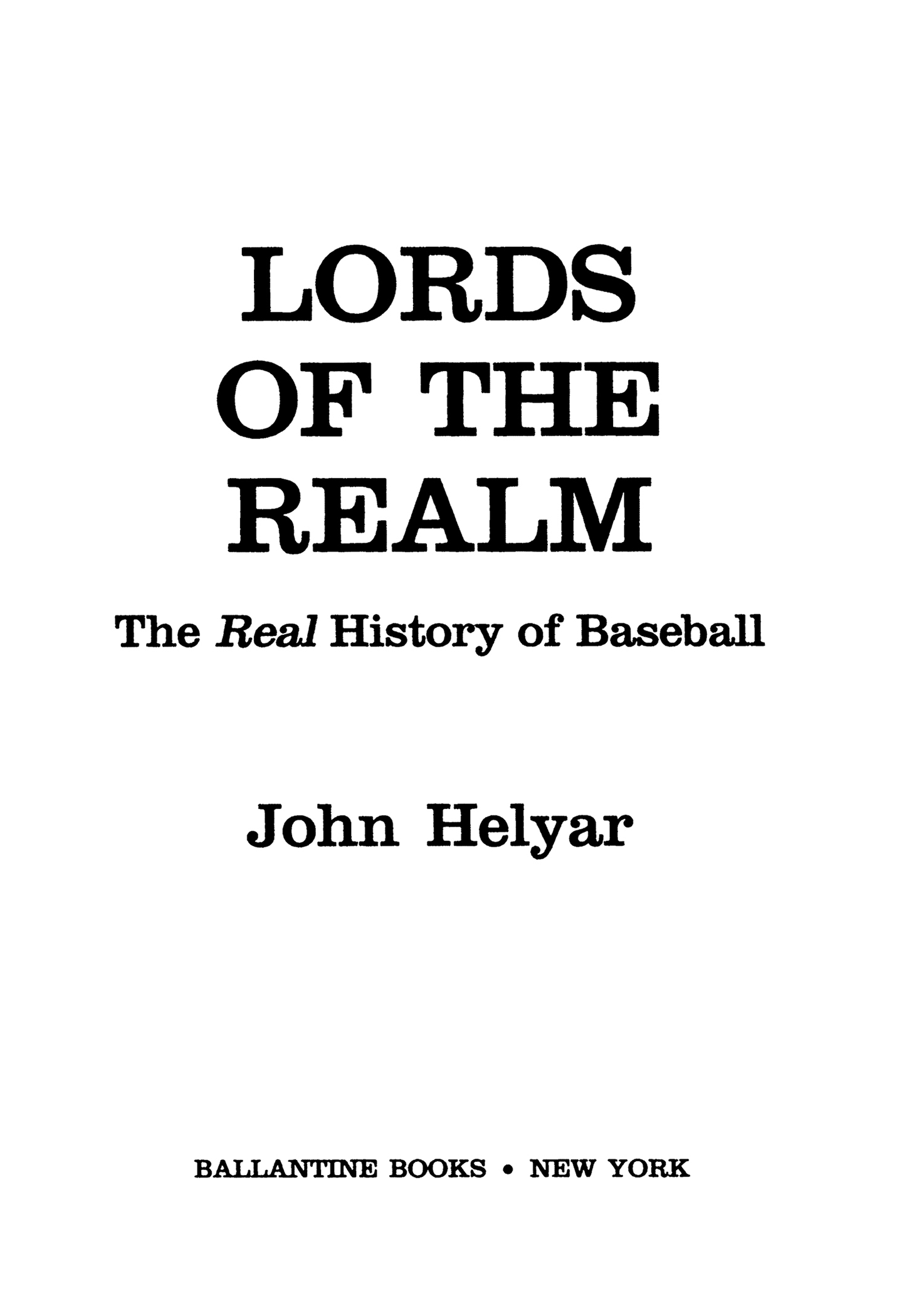Contents
Landmarks
Print Page List
ENLIGHTENING AND PROVOCATIVE.
Publishers Weekly
A MUST-READ FOR BASEBALL FANS and for anyone who would like to know how the very wealthy and the very ambitious manage the business of Americas national pastimeHelyar takes us inside the most intimate meetings at some of the most crucial moments in baseball history.
Kirkus Reviews
A LUCID, COMPELLING ECONOMIC HISTORY OF THE GAMEA labyrinthine tale fueled by money and driven by a zany cast of characters that only baseball seems able to produceHelyar not only covers a lot of ground, but, more important, he places all of the events and people into a coherent context.
Booklist
ONE OF THE MOST ENTERTAINING SPORTS BOOKS OF THE YEAR. [Helyar] deftly weaves the financial facts with in-depth and entrancing profiles of many major league owners. [His] investigative skills make the book informative, while his sincere interest in the sport allows even the casual fan to read this work with great enjoyment. Captivating and insightfulHighly recommended.
Library Journal
Copyright 1994 by John Helyar
All rights reserved under International and Pan-American Copyright Conventions. Published in the United States by Ballantine Books, a division of Random House, Inc., New York, and simultaneously in Canada by Random House of Canada Limited, Toronto.
Library of Congress Catalog Card Number: 93-41944
ISBN9780345465245
Ebook ISBN9780307801425
This edition published by arrangement with Villard Books, a division of Random House, Inc. Villard Books is a registered trademark of Random House, Inc.
randomhousebooks.com
a_prh_5.5.0_c0_r0
Contents
The magnate must be a strong man among strong men, else other club owners in the league will combine in their own interests against him and his interest, and by collusion force him out of the game.
A. G. S PALDING ,
Chicago National League owner, 1890
The great trouble with baseball today is that most of the players are in the game for the money thats in itnot for the love of it, the excitement of it, the thrill of it.
T Y C OBB , 1925
Baseball was made for kids, and grown-ups only screw it up.
B OB F ELLER , pitcher
You go through The Sporting News for the last one hundred years, and you will find two things are always true. You never have enough pitching, and nobody ever made money.
D ONALD F EHR , executive director,
Major League Baseball Players Association
Gentlemen, we have the only legal monopoly in the country and were fucking it up.
T ED T URNER , owner, Atlanta Braves
$ $
B EFORE IT WAS ever a business it was a game.
It came out of the 1840s, when teams from New York first crossed the Hudson River to Elysian Fields, laid out a diamond, agreed upon the rules, and played a game they called base, later lengthened to baseball.
It grew in the 1850s and 1860s, but it remained a gentlemans sport. Teams rode to their games in decorated carriages, singing their team songs. In country greens and city parks, thousands of young men played. It became too popular to remain amateur for long, in the young entrepreneurial nation.
In 1871, the first league was formed of teams who played for pay. It was called the National Association of Professional Baseball Players, and it was a slapdash thing. Over its five-year life, teams came and went with dizzying rapiditytwenty-five of them in all. So did players. The best ones, called revolvers, jumped around between teams for the best offer.
But if it wasnt a stable business, it was well on its way to becoming the national pastime.
Like everything else American it came with a rush, wrote John Montgomery Ward, a star player of the day. The game is suited to the national temperament. It requires strength, courage and skill; it is full of dash and excitement and though a most difficult game in which to excel, it is yet extremely simple in its first principles and easily understood by everyone.
The changing landscape of the country had much to do with baseballs hold on America. As people moved from rural farms into urban tenements during the emerging Industrial Revolution, the game kept a nation in touch with its roots. Baseball was played on vast swatches of green in the middle of dreary, gray cities. Baseball celebrated the rugged individual within a team game. It came to be called the National Pastime, not just because it was played and watched by so many people but because it so resembled the national character.
Albert Goodwill Spalding tried to export baseball to other countries. The owner of a team and of a sporting-goods empire, he saw vast worldwide sales of bats and balls. In 1888, he even sponsored a globe-trotting tour of exhibition games that visited Hawaii, Australia, Ceylon, Egypt, Italy, France, England, and Ireland. In one far-flung locale after another, Americas top players were watched with profound indifference. The game took root only in America.
Like the pioneering country still being settled, this game valued both brute strength and daring ingenuity. It also countenanced a certain amount of cheating. Baseball was beautiful but tough, a sport not unlike the Chicago of Nelson Algren: where the bulls and the foxes live well and the lambs wind up head-down from the hook.
So too would baseball mirror the periods epic struggles in commerce. Robber barons were coming to the fore and business was not polite. Disputes between labor and management were solved not by federal mediators but by Pinkerton thugs. Baseball would have its own early bare-knuckle fights for control of the game and business. Then the owners would seize it for a hundred years.
In the same spring when Sitting Bull swept Custer at the Little Big Horn, the National League of Professional Baseball Clubs was created. The year was 1876, and the enterprise was better known as the National League. It ushered in a new way of doing business in baseball: a central office in New York and an aim to curb the chaos that afflicted the previous league.
By 1879, its eight teams had developed a compact. At seasons end, each would reserve five players, making them off-limits to any other team. The players were not told about this agreement. Theyd simply discover that they couldnt catch on with any but their own team.
Thus the reserve clause was born, and the original was only a modest version. When another major league, the American Association, began in the early 1880s, the compact was extended to them and the annual reserve list grew to eleven players. It was on its way to encompassing every player.
The first recorded owners wail over salaries came in 1881. Professional baseball is on the wane, declared Albert Spalding, owner of Chicagos National League team. Salaries must come down or the interest of the public must be increased in some way. If one or the other does not happen, bankruptcy stares every team in the face.
The first recorded salary cap came in 1889. The owners set top pay at $2,500, with a tiered pay scale ranging downward from there. The lowest classified players would have to sweep up the ballpark or take tickets.
The Brotherhood of Professional Base Ball Players, a union formed in 1885, rebelled against the pay scale and the cap. It formed the Players National League, to begin play in 1890.

